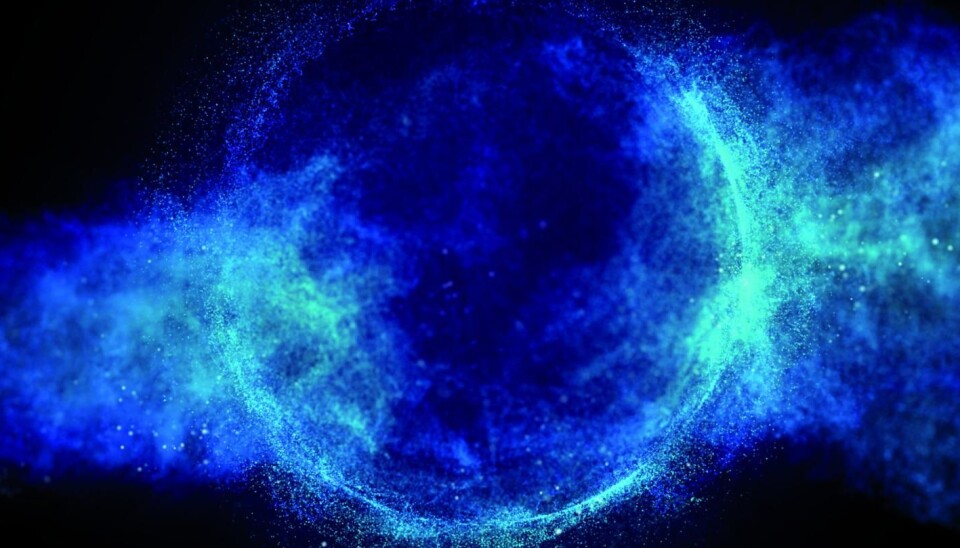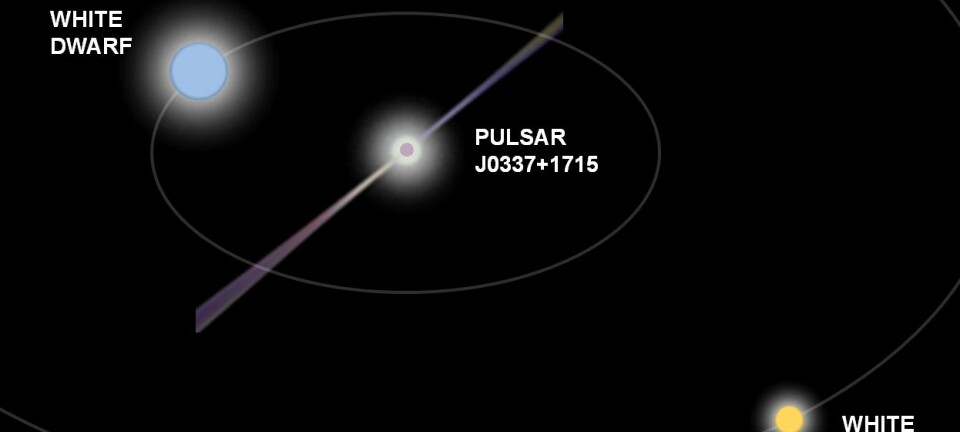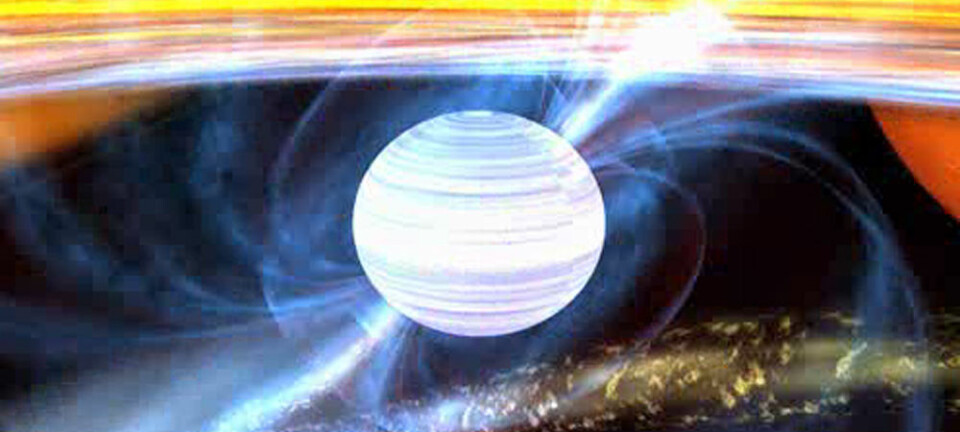
Higgs: a scientific delight or a painful headache?
CERN releases new findings on the Higgs boson that once again brings the future of particle physics into question.
When the Higgs boson was discovered at CERN in 2012, physicists involved with the project became superstars overnight. Now that the dust has settled it has become clear that the discovery might’ve led to more questions than answers, even threatening the validity of the Standard Model of particle physics -- the very same theory the discovery confirmed in the first place.
A man who’s not afraid of naming those questions that so urgently need answering is Professor Jonathan A. Bagger, director of TRIUMF, Canada’s national laboratory for particle and nuclear physics. During a talk at the Euroscience Open Forum in Copenhagen he plunged straight into the Higgs questions which led to a heated debate on the future of particle physics.
One thing is clear, said Bagger, and that is that the Standard Model -- which relies on the Higgs -- isn’t all-inclusive.
“Are the properties of neutrinos and anti-neutrinos the same? Or are they different? Why is the universe filled with matter and not anti-matter?” he asked the crowd of listeners.

Simultaneously to Bagger’s animated talk during the weekend, CERN released an article that once and for all confirmed that the Higgs decays directly to fermions in accordance with the Standard Model.
The pieces of the story that remain untold
The Higgs model is the safety pin which keeps the Standard Model together. With the Higgs at the centre of the model predictions can be made and proven like the one CERN published this weekend.
“[...] the Higgs boson decays directly to fermions at a rate consistent with that predicted by the Standard Model of particle physics,” said CERN in the release.
This confirms what scientists already suspected to be true: the Higgs behaves as predicted.
This is good and bad. Good, because it adds to the stacks of evidence that the Standard Model, an all-time favourite of many physicists, can prevail the test of time. Bad, because it still leaves much to be desired and even less accounted for -- like an explanation for dark matter?
Quantum mechanics was not born by people going around chatting to each other
For those reasons, not all scientists were thrilled by CERN’s latest release. If something had been wrong with the way the Higgs behaves it could’ve pointed in the direction of physics beyond the Standard Model. Unfortunately, Higgs is a very well-behaved particle.
More questions than answers
There are four fundamental problems with the Standard Model and the Higgs which keep particle physicists awake at night.
These are questions concerning neutrinos, dark matter, cosmic acceleration, and the Higgs itself -- but paradoxically, the Standard Model might actually hold the key to solving some of these issues, said Bagger.
“The Standard Model gives us an incredibly secure platform on which to build and launch experiments to determine the answers to the questions that remain,” he said.
Cosmic acceleration raises so many questions. What is this dark energy, is it constant? Does it change over time?
In the Standard model neutrinos are mass-less; in the real world they are not. “This has the strangest consequence if you look at the sun,” said Bagger, referencing a classic problem in physics, the solar neutrino problem:
Physicists know how hot our sun is, they know which nuclear reactions are taking place inside it which mean they can tell pretty much exactly how many neutrinos are produced inside the sun. Only the problem is that only half that amount of neutrinos are measured hitting earth.
Bagger allowed the audience to ponder the scenario before he slipped the reveal.
“What’s really happening is that one type of neutrinos are propagating and changing into each other,” he said. “This is not explained by the standard model.”
A gateway into the dark side of the universe?
In fact, the Standard Model is only good if you ignore 70 per cent of the universe -- most of which physicists believe is made up by the yet-to-be-explained dark matter and dark energy.
“We physicists are so proud of the Standard Model but there’s actually five times as much dark matter in the universe as there is regular matter -- and this goes unaccounted for [in the Standard Model],” said Bagger.
He suggests that the Higgs could be our looking glass into new theories on dark matter and dark energy. Unfortunately, none of the particle’s properties have yet provided any leads on where to look next.
If the Standard Model can’t offer an explanation then maybe we should find it ourselves, suggested Bagger. “If space is full of dark matter, then let’s find it -- and let’s produce it here on earth,” he said.
Higgs hiccups
The Higgs boson itself provides multiple problems.
First of all it’s 125 times the mass of a proton and if this is used in combination with the Standard Model to measure the age of the universe it reveals that our universe, and very existence, exists in a metastable state -- which implies that over time quantum fluctuations will destroy our universe, said Bagger.
He said he had no idea of what that even meant but that our 13.8 billion year old universe seemed to behave fairly consistently up until now.
“[But] does it mean that someday the universe will just... fall apart?” said Bagger. “Maybe there are some new physics that stabilises the universe -- I don’t know.”
Is it an exciting time for particle physics or total quantum mayhem?
Although the Higgs might have created more problems for physics than it has solved, Bagger remains optimistic. He hopes the Higgs is connected to new physics -- in particular something that will allow physicists to explain dark matter.
“Maybe there are extra dimensions to space which what string theory would predict,” said Bagger. “Or maybe we just need to change the rules.”
Instead of having just one universe we could live in a multiverse which is the explanation given by the theory of the same name, said Bagger. “I don’t know what the answer is, but it definitely goes beyond the Standard Model’
What's next?
Bagger’s personal favourite is supersymmetry.
Supersymmetry suggests that all particles have a “superpartner” with identical mass and quantum numbers besides spin, which can be thought of as the orientation of the particle.
Bagger said the Higgs fits neatly into this theory as it stabilises the Higgs particle and even accounts for a dark matter particle. However, these superpartners remain undiscovered and it’s up to future experiments to prove or disprove their existence.
So what the Higgs do we do now? Bloody good question. Unsurprisingly, Bagger emphasise the need for more experiments. “Quantum mechanics was not born by people going around chatting to each other,” he said.
When the Large Hadron Collider at CERN boots up again in the beginning of next year answers will come -- for better or for worse for the future of particle physics.









